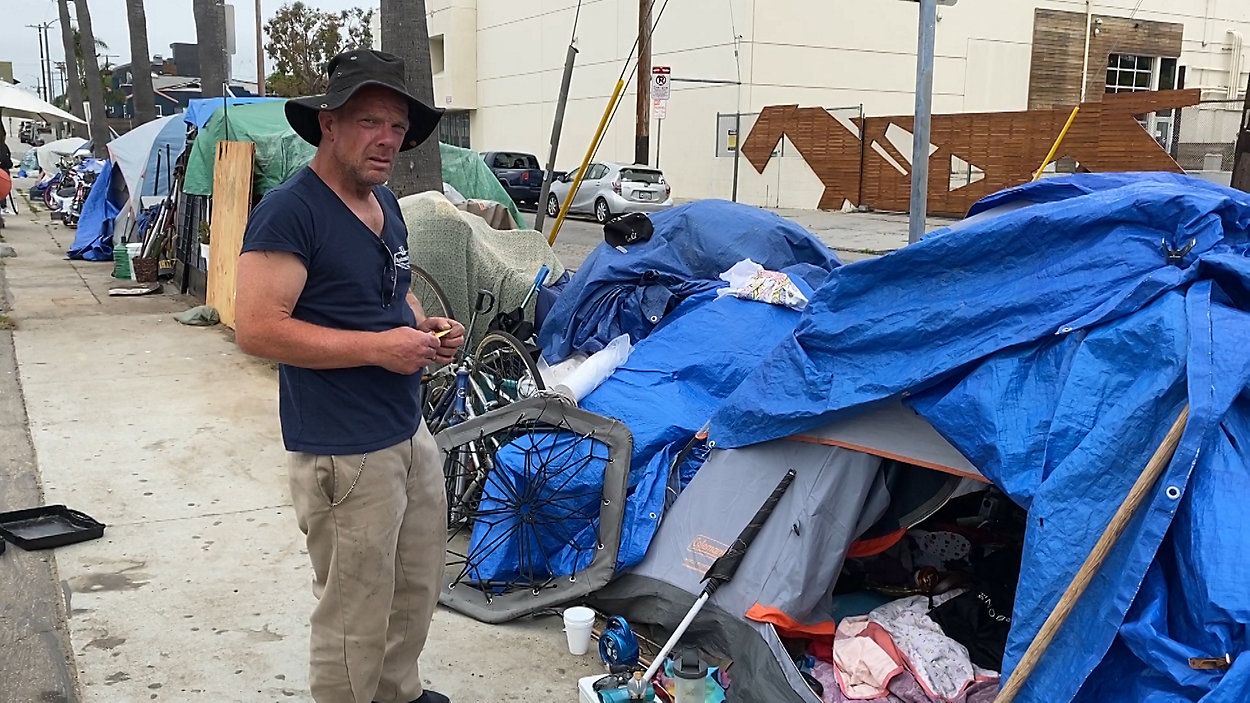LOS ANGELES -- Even before the coronavirus struck the nation and the Southland, the homeless population in the city and county of Los Angeles had already grown significantly from the previous year, according to figures released Friday.
According to the Los Angeles Homeless Services Authority, the homeless count conducted in January found that the county's homeless population increased by 12.7% over the previous year, while the city of Los Angeles' homeless population jumped by 14.2%.
According to LAHSA, the agency helped house more people in the past year than ever before, yet the number of people falling into homelessness over the same period continued to exceed the rate at which people were housed.
"The homeless count numbers are a snapshot of what the world looked like in January -- but today, the world looks different," LAHSA Executive Director Heidi Martson said. "I also want to be clear that homelessness is a byproduct of racism, which is woven into the fabric of every system nationwide. If we want to see homelessness go down, we have to go upstream to dismantle systemic racism. We use the homeless count as a tool, but its not the only tool we have."
In January 2019, Los Angeles County had 58,936 homeless people, but this year's number rose to 66,433. The city of Los Angeles counted 36,165 in 2019, and 41,290 in January.
Elise Buik, the president and CEO of the United Way of Greater Los Angeles, said the city's passage of Proposition HHH and the county's adoption of Measure H, both of which commit funding to build permanent supportive housing and shelters, helped get people off the streets, but it's not enough.
"We've seen our rehousing system ramp up to help serve our most vulnerable and move into high-gear to respond to COVID-19," Buik said. "Now it's time to create an L.A. County where no one spends more than 30% of their income on housing. We'll need to build more housing, prevent more homelessness and get federal, state, county and city funds working together to do it."
Other Southland counties saw rises in homeless populations, although they may be counting biennially, while Los Angeles has committed to annual Point-in-Time counts. San Diego County was the only Southland region that saw a decrease in its homeless population, according to LAHSA.
The number of homeless seniors, defined as people 62 years old and older, rose from 4,255 to 4,939 in the last year, but sheltered homeless seniors also rose from 976 to 1,351.
Despite the rise in homelessness, LAHSA has counted more people who are now sheltered or housed. Since the COVID-19 pandemic, LAHSA reported more than 6,000 people have been housed through programs including Project Roomkey, which shelters homeless people in hotels or motels during the pandemic.
Homeless people were also housed in the last year through Rapid Rehousing programs, permanent supportive housing and other methods, according to LAHSA.
Outreach efforts showed in 2019 that 7,264 homeless people reported they had problems with substance abuse and 12,869 said they said serious mental health issues. In January, 15,023 homeless people said they had substance problems and 14,215 said they had serious mental health issues.
LAHSA reported 59% of the homeless people they surveyed said their plight was due to economic hardship.
"The homeless count shows we're lifting 207 people out of homelessness every day -- 74 more daily than last year -- a monumental achievement by any measure," Los Angeles County Supervisor Mark Ridley-Thomas said. "The problems is, we're being outpaced by 227 people falling into homelessness every day.
"We have an obligation to learn from this data, which makes clear the racial disparities that continue to define this crisis. We must also be resolute in strengthening our safety net in the areas of housing, employment, education and health care, which are essential to preventing many more people from becoming homeless. Now is the time to double down."



